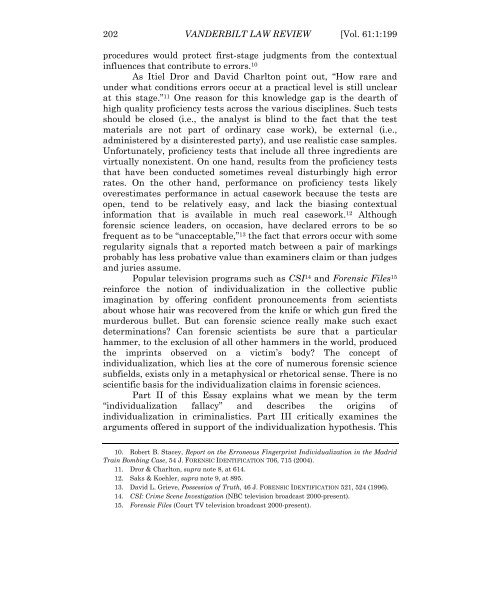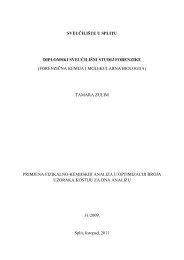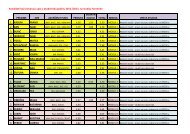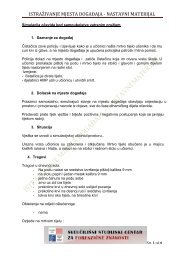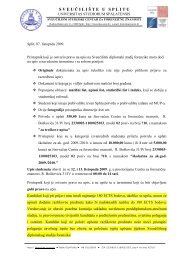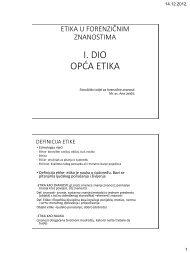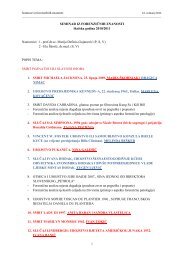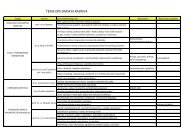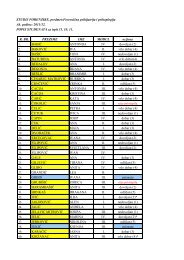The Individualization Fallacy in Forensic Science Evidence
The Individualization Fallacy in Forensic Science Evidence
The Individualization Fallacy in Forensic Science Evidence
You also want an ePaper? Increase the reach of your titles
YUMPU automatically turns print PDFs into web optimized ePapers that Google loves.
202 VANDERBILT LAW REVIEW [Vol. 61:1:199procedures would protect first-stage judgments from the contextual<strong>in</strong>fluences that contribute to errors. 10As Itiel Dror and David Charlton po<strong>in</strong>t out, “How rare andunder what conditions errors occur at a practical level is still unclearat this stage.” 11 One reason for this knowledge gap is the dearth ofhigh quality proficiency tests across the various discipl<strong>in</strong>es. Such testsshould be closed (i.e., the analyst is bl<strong>in</strong>d to the fact that the testmaterials are not part of ord<strong>in</strong>ary case work), be external (i.e.,adm<strong>in</strong>istered by a dis<strong>in</strong>terested party), and use realistic case samples.Unfortunately, proficiency tests that <strong>in</strong>clude all three <strong>in</strong>gredients arevirtually nonexistent. On one hand, results from the proficiency teststhat have been conducted sometimes reveal disturb<strong>in</strong>gly high errorrates. On the other hand, performance on proficiency tests likelyoverestimates performance <strong>in</strong> actual casework because the tests areopen, tend to be relatively easy, and lack the bias<strong>in</strong>g contextual<strong>in</strong>formation that is available <strong>in</strong> much real casework. 12 Althoughforensic science leaders, on occasion, have declared errors to be sofrequent as to be “unacceptable,” 13 the fact that errors occur with someregularity signals that a reported match between a pair of mark<strong>in</strong>gsprobably has less probative value than exam<strong>in</strong>ers claim or than judgesand juries assume.Popular television programs such as CSI 14 and <strong>Forensic</strong> Files 15re<strong>in</strong>force the notion of <strong>in</strong>dividualization <strong>in</strong> the collective publicimag<strong>in</strong>ation by offer<strong>in</strong>g confident pronouncements from scientistsabout whose hair was recovered from the knife or which gun fired themurderous bullet. But can forensic science really make such exactdeterm<strong>in</strong>ations? Can forensic scientists be sure that a particularhammer, to the exclusion of all other hammers <strong>in</strong> the world, producedthe impr<strong>in</strong>ts observed on a victim’s body? <strong>The</strong> concept of<strong>in</strong>dividualization, which lies at the core of numerous forensic sciencesubfields, exists only <strong>in</strong> a metaphysical or rhetorical sense. <strong>The</strong>re is noscientific basis for the <strong>in</strong>dividualization claims <strong>in</strong> forensic sciences.Part II of this Essay expla<strong>in</strong>s what we mean by the term“<strong>in</strong>dividualization fallacy” and describes the orig<strong>in</strong>s of<strong>in</strong>dividualization <strong>in</strong> crim<strong>in</strong>alistics. Part III critically exam<strong>in</strong>es thearguments offered <strong>in</strong> support of the <strong>in</strong>dividualization hypothesis. This10. Robert B. Stacey, Report on the Erroneous F<strong>in</strong>gerpr<strong>in</strong>t <strong>Individualization</strong> <strong>in</strong> the MadridTra<strong>in</strong> Bomb<strong>in</strong>g Case, 54 J. FORENSIC IDENTIFICATION 706, 715 (2004).11. Dror & Charlton, supra note 8, at 614.12. Saks & Koehler, supra note 9, at 895.13. David L. Grieve, Possession of Truth, 46 J. FORENSIC IDENTIFICATION 521, 524 (1996).14. CSI: Crime Scene Investigation (NBC television broadcast 2000-present).15. <strong>Forensic</strong> Files (Court TV television broadcast 2000-present).


